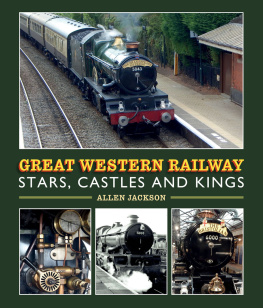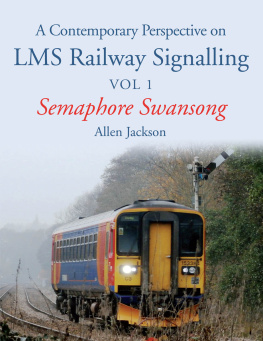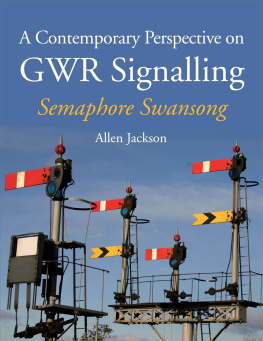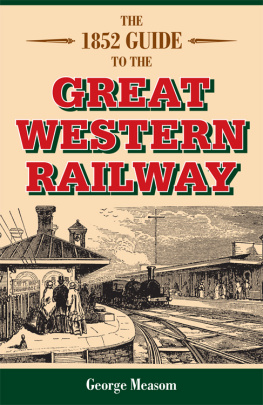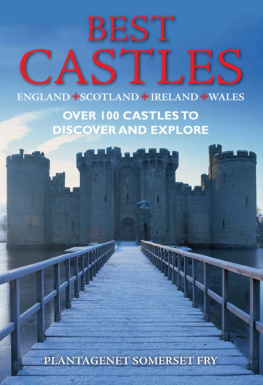Allen Jackson - Great Western Railway Stars, Castles and Kings
Here you can read online Allen Jackson - Great Western Railway Stars, Castles and Kings full text of the book (entire story) in english for free. Download pdf and epub, get meaning, cover and reviews about this ebook. publisher: Crowood, genre: Science fiction. Description of the work, (preface) as well as reviews are available. Best literature library LitArk.com created for fans of good reading and offers a wide selection of genres:
Romance novel
Science fiction
Adventure
Detective
Science
History
Home and family
Prose
Art
Politics
Computer
Non-fiction
Religion
Business
Children
Humor
Choose a favorite category and find really read worthwhile books. Enjoy immersion in the world of imagination, feel the emotions of the characters or learn something new for yourself, make an fascinating discovery.
- Book:Great Western Railway Stars, Castles and Kings
- Author:
- Publisher:Crowood
- Genre:
- Rating:5 / 5
- Favourites:Add to favourites
- Your mark:
- 100
- 1
- 2
- 3
- 4
- 5
Great Western Railway Stars, Castles and Kings: summary, description and annotation
We offer to read an annotation, description, summary or preface (depends on what the author of the book "Great Western Railway Stars, Castles and Kings" wrote himself). If you haven't found the necessary information about the book — write in the comments, we will try to find it.
Great Western Railway Stars, Castles and Kings — read online for free the complete book (whole text) full work
Below is the text of the book, divided by pages. System saving the place of the last page read, allows you to conveniently read the book "Great Western Railway Stars, Castles and Kings" online for free, without having to search again every time where you left off. Put a bookmark, and you can go to the page where you finished reading at any time.
Font size:
Interval:
Bookmark:
GREAT WESTERN RAILWAY
STARS, CASTLES AND KINGS
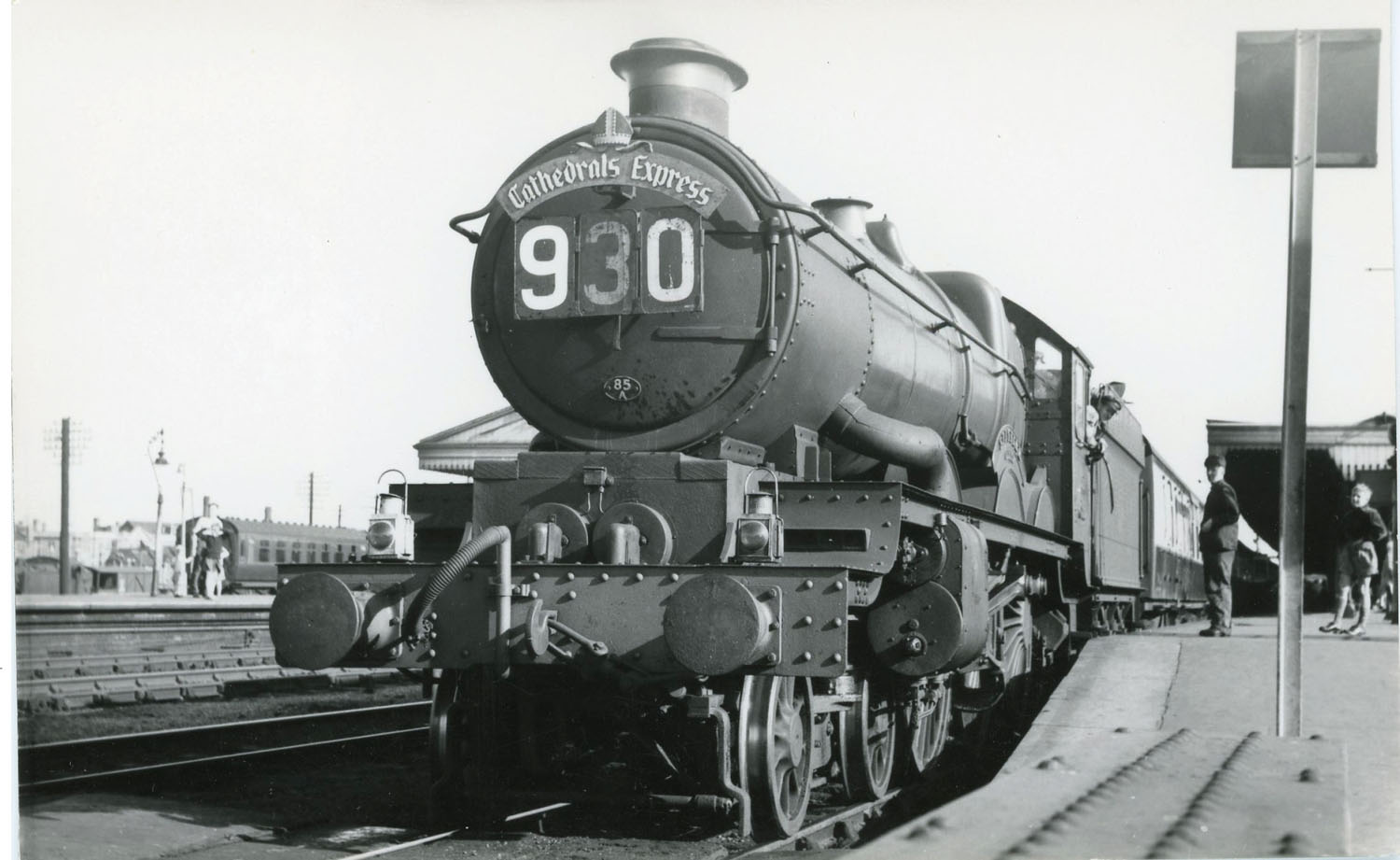
GREAT WESTERN RAILWAY
STARS, CASTLES AND KINGS
ALLEN JACKSON

THE CROWOOD PRESS
First published in 2018 by
The Crowood Press Ltd
Ramsbury, Marlborough
Wiltshire SN8 2HR
www.crowood.com
This e-book first published in 2018
Allen Jackson 2018
All rights reserved. This e-book is copyright material and must not be copied, reproduced, transferred, distributed, leased, licensed or publicly performed or used in any way except as specifically permitted in writing by the publishers, as allowed under the terms and conditions under which it was purchased or as strictly permitted by applicable copyright law. Any unauthorised distribution or use of thistext may be a direct infringement of the authors and publishers rights, and those responsible may be liable in law accordingly.
British Library Cataloguing-in-Publication Data
A catalogue record for this book is available from the British Library.
ISBN 978 1 78500 482 7
CONTENTS
PREFACE
AND ACKNOWLEDGEMENTS
By the turn of the nineteenth century the Great Western Railway had put behind it the enormous expense of the change from broad to standard gauge and the building of the Severn Tunnel, and was looking forward to a new era of prosperity and stability.
The Edwardian era was to continue the foundations established under Queen Victoria whose duration of reign was eclipsed by the GWR itself who preceded it.
Oher civil engineering projects included the South Wales line through Badminton, the Berks and Hants line and that connecting with Fishguard Harbour, as well as the harbour itself. In the depression of the 1930s improvements to infrastructure, carried out to alleviate unemployment, had a positive impact on GWR facilities.
In terms of locomotives, early work by Sir Daniel Gooch, Joseph Armstrong and later William Dean had provided steady if unspectacular progress. Deans 4-4-0 express passenger locomotives were flyers and well capable of holding their own in a late nineteenth-century context of train loadings. His 27XX pannier tanks were the template for the enlarged 57XX panniers, which became the GWRs most numerous class. The Dean Goods, an example of which is preserved in STEAM Museum of the Great Western Railway, Swindon, was to serve the nation in two World Wars as well as being a model for a free-steaming and reliable 0-6-0 freight locomotive, the nineteenth-century staple.
The other pre-grouping railways had established a formula for locomotive building that had not changed radically since the days of Stephensons Rocket in 1830. Using that which had been tried and tested over sixty years or more was unlikely to get you sacked as a Locomotive Carriage and Wagon Superintendent.
During Deans final years at Swindon, his failing health caused him to rely increasingly on the engineer who was to become his successor, George Jackson Churchward. Dean retired in 1902 to spend the last three years of his life by the seaside. Dean Street, Swindon, which runs along the south side of the GWR line, is named after him.
The original intention for this volume was to use previously unpublished photographs but this has proved impossible given the age of the subject matter. Where possible, however, locomotives are shown in unusual or notable circumstances and as much information is included as space permits.
Although personnel are generally referred to by the male gender, because in history that is what they were, it is recognized that not only men provide the many crews and operating staff on the heritage scene who are carrying out valuable work in helping to keep the railway history of this country alive.
I would like to thank the Great Western Trust team at Didcot, in particular the noted author Laurence Waters for his unstinting help with photographic research. The staff at STEAM Museum of the Great Western Railway have also provided invaluable help.
CHAPTER ONE
GEORGE JACKSON CHURCHWARD
George Jackson Churchward (19571933) came from Stoke Gabriel, South Devon. He was blessed with the ability to recognize and implement the best features and practice of steam engineers from around the world. Steam technology had moved almost to its limits by the end of the nineteenth century, with the possible exception of superheating.
This commonsensical approach has to be viewed in the context of how an engineer would be promoted from a practical position on the shop floor to hidebound administrative responsibilities, divorced from the practicalities of the job and possibly mostly concerned with company politics. Churchwards common sense was derived from the acquisition of experience on the job.
Churchward was an eminently practical man who kept his engineering feet firmly on the ground, staying in touch with day-to-day practicalities. If there were any significant change to a locomotive he wanted tests and comparisons made with previous standards. The rolling test bed at Swindon and the GWR dynamometer car were testament to this measured approach. Churchward understood that the steam locomotive was principally a question of the boiler: from this all else could flow. The best valve gear and wheel arrangement were of no use if they could not be supplied with steam in abundance and at economical rates. In addition a poorly designed and constructed boiler could be ruinously expensive in maintenance costs and inconvenient in operational service.
Boilers
By the turn of the nineteenth century the GWRs locomotive practice might best be described as Deans locomotives with Churchwards boilers. Churchward had adapted best practice in terms of a Belpaire firebox and coned taper boiler barrel and this was at variance with most other designers, except perhaps Samuel W. Johnson on the Midland Railway.
The Belpaire locomotive firebox is surrounded by a water jacket to enhance steam production and the actual firebox is constructed to the same shape suggested by the outside appearance, but is smaller to allow room for the water jacket on the outside. This allows the stays that support and keep the firebox apart from the water jacket to be simple straight pieces. However, the manufacturing cost was higher than that of the standard nineteenth-century round-topped firebox, which was basically two circular structures, one within the other. The advantage of the Belpaire type is that the enlarged space above the firebox contains more water, where most of the heat is. This was described at the time as having greater evaporative or steam-making potential.
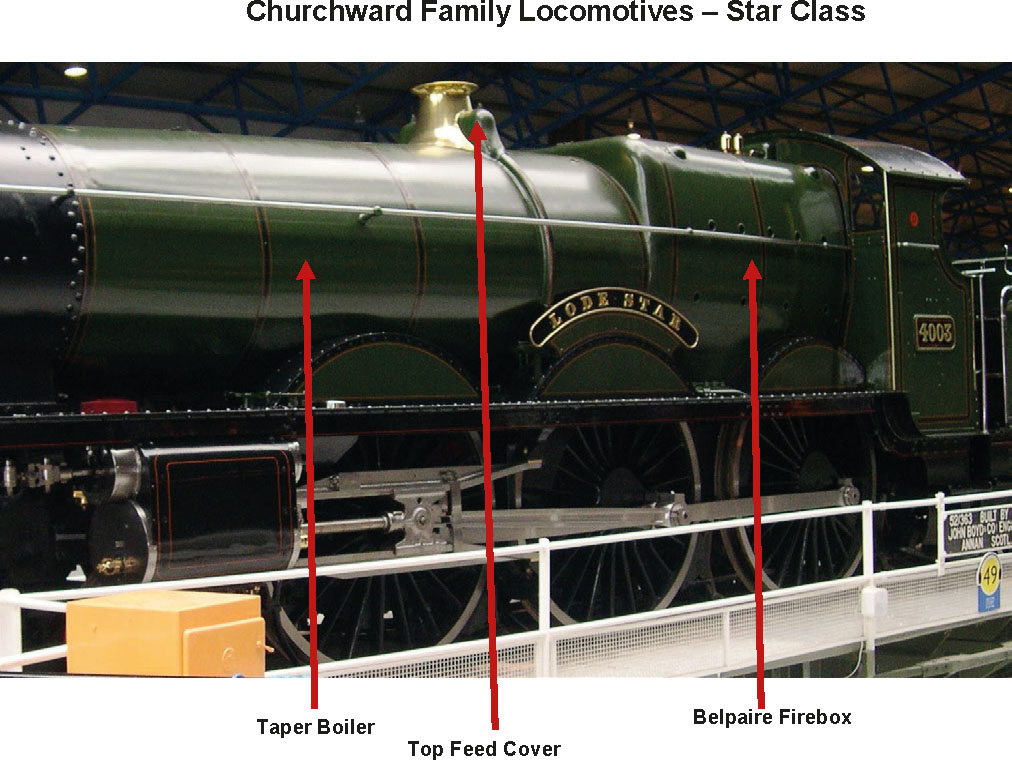
Fig. 1. Star Class 4003 Lode Star at the National Railway Museum (NRM), York, illustrating the Belpaire firebox, coned boiler and topfeed boiler arrangements, June 2004.
The Belpaire firebox, as Churchward implemented it, had an enlarged area for water circulation at the front and at the point where it was farthest away from the hottest part of the fire.
The effect of this was to enhance water circulation in that area. As well as producing more steam, this led to a reduction in local overheating nearest the fire. The disproportionate effects resulting from the rear of the firebox being intensely hot, and the rest not so, produced distortion in the boiler plating and stays and consequently increased maintenance costs. Churchwards design avoided this pitfall. This meant that the Belpaire firebox of Churchwards manufacture was tapered towards the cab.
Next pageFont size:
Interval:
Bookmark:
Similar books «Great Western Railway Stars, Castles and Kings»
Look at similar books to Great Western Railway Stars, Castles and Kings. We have selected literature similar in name and meaning in the hope of providing readers with more options to find new, interesting, not yet read works.
Discussion, reviews of the book Great Western Railway Stars, Castles and Kings and just readers' own opinions. Leave your comments, write what you think about the work, its meaning or the main characters. Specify what exactly you liked and what you didn't like, and why you think so.

